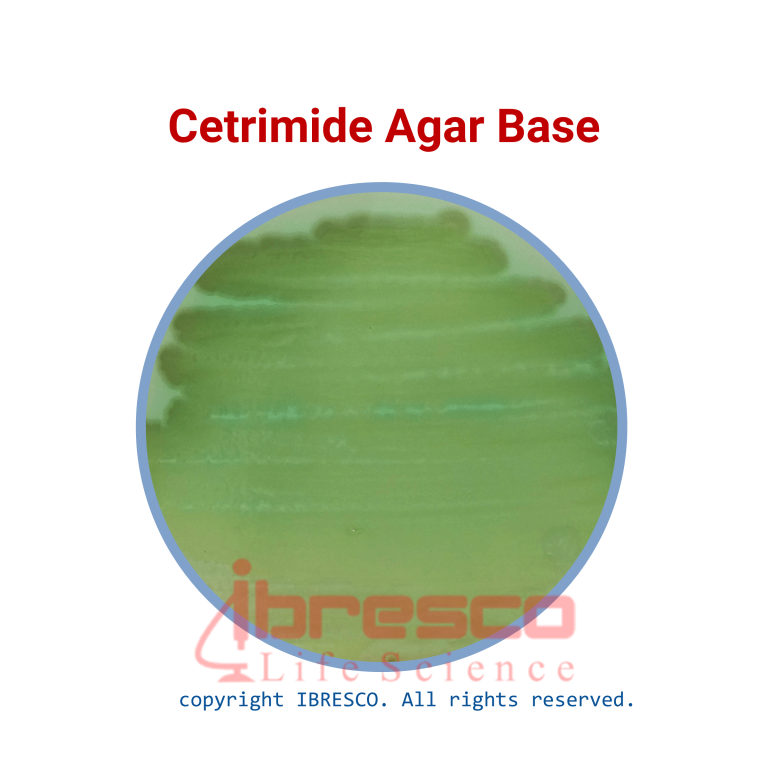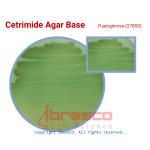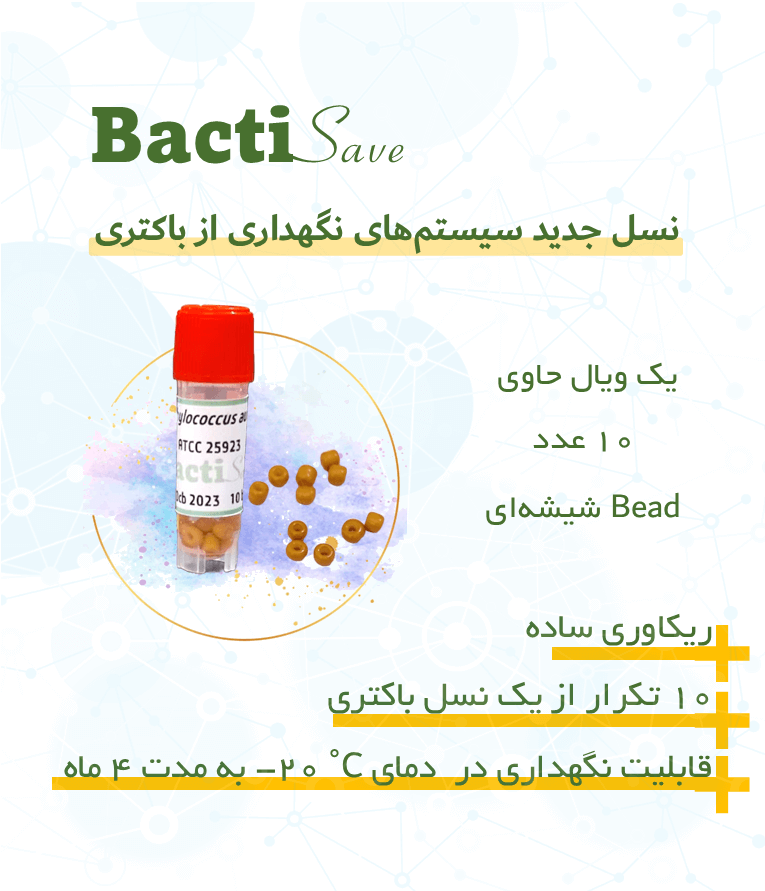Test
- The sample can be inoculated directly or after cultivation in a non-selective medium onto the culture plates.
- Incubate the plates at 25-37 degrees Celsius for 18-48 hours.
Results and Interpretation
Peptone gelatin is a rich source of vitamins, nitrogen, and carbon in this culture medium. Magnesium chloride and potassium chloride increase the production of pyocyanin and fluorescein. The presence of cetrimide, as a cationic detergent and selective agent in the medium, causes the removal of nitrogen and phosphorus from bacterial cells other than Pseudomonas. Therefore, bacteria other than Ps. aeroginosa are unable to tolerate this antimicrobial agent. Glycerol is also used as a carbon source in this medium.
After incubation, examine the grown colonies under short-wavelength ultraviolet light (254 nanometers) for the presence of fluorescein. Also, visually examine the yellow-green to blue colonies for the production of pyocyanin pigment. Both fluorescein and pyocyanin are produced specifically by Pseudomonas aeruginosa strains. Note that some strains Ps. aeroginosa It may not grow in this culture medium, or even if it grows, it may not produce pyocyanin. Others will exhibit fluorescence if pyocyanin is not produced.
Note
- Note that the type of peptide used in this culture medium affects the process of pyocyanin production by aeruginosa.
- No culture medium can rely on the production of all the pigments of this bacterium.
- Sometimes some of the intestinal bacteria can cause a slight yellowing of the culture medium, but this color change is easily identifiable because it does not have yellow fluorescence.
- Some non-fermenting or aerobic spore-forming bacteria produce yellowish-brown pigments in this medium. Serratia strains are sometimes observed with pink pigments.
- Research has shown that if Pseudomonas is kept at room temperature for a short time, it loses its fluorescence properties, but if the plate is reheated, this ability will be restored.






